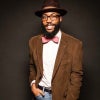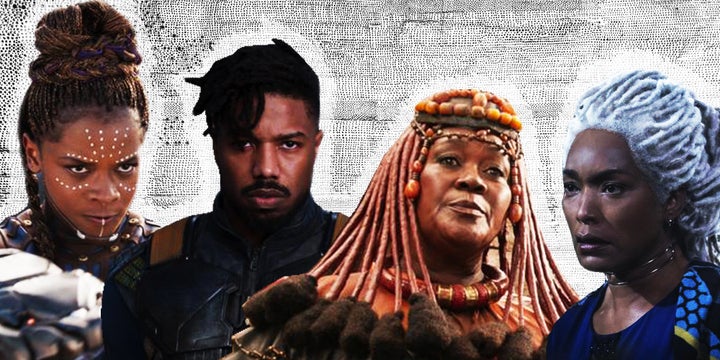
Marvel’s latest blockbuster, ”Black Panther,” literally ventures into lands unknown ― the storied, albeit fictitious African nation of Wakanda and all its trappings. But Wakanda’s dress and decoration did not appear out of the ether. They’re not simply retreads of traditional African architecture, garb and hairstyling, but instead the calculated vision of the film’s production team, who were tasked with constructing the aesthetics of a black future.
Hairstylist Camille Friend was vital to the success of this project ― essential to creating a world in which black hair is assertive and unbound by restrictive notions of respectability.
HuffPost spoke with Friend about how she prepared for styling the “Black Panther” cast, the challenges she faced along the way and the future of black hair. (This interview was edited for clarity and length.)
The movie is kind of this gargantuan project. Take me through when you found out you were going to be working on the film, what sort of preparation it took, what sort of collaboration there was between you and the rest of the production team.
I found out I was going to do “Panther” probably around October of 2016. I’ll tell you: The one thing beautiful about Marvel is that you know — usually six months in advance — what movie you’re going to do. So basically I just started doing a lot of research.
I used a lot of reference books, especially books about Africa. Basically I started with resource books, looking at African books and just looking at different tribes and looking at the hair textures, looking at the clothes, looking at the textiles, even looking at the terrain of the country and the color of the earth. All of those things, really, are interesting to me, and even looking at different Eskimos and different Indian cultures — just looking globally at different tribal looks. That’s what I started with.
But the collaboration is really between what we call “hair, makeup and wardrobe,” so looking first at [costume designer] Ruth Carter — at her wardrobe — and what colors she was going to use, what kind of patterns, what kind of textures. And also, we looked at what makeup was going to do with different people, and that’s how we broke down the different tribal looks. And also, working with our director, Ryan Coogler, and getting his input on different characters.
And then always going back to the actor with “What do you feel about your character? What do you think your character is?” We’d refer to them in exploring the character, so that’s how everything came together.
Specifically, I’ve seen Erik Killmonger’s hair come up in interviews with actor Michael B. Jordan and online threads. Was the decision made on your part to deviate a bit from what the character initially looked like in the comics into something more artistic and, perhaps, modern?
Actually, that was really a Ryan Coogler/Camille Friend collabo right there. We just wanted him to look very modern, but funky and edgy, and like the total epitome of everything Wakanda isn’t. We wanted to give him his own fresh look, and Michael really wanted to do something special. He’d grown his hair really, really long, so we just started looking at how we could make him look different and make him look cool. So that’s how we came up with the dreadlock ideas but still kept it modern with the sides and the back faded. Then we knew we’d be able to take the dreads forward, push them back and play with them.
I think that’s something great we did — the guys absolutely love that. You just don’t know. Every guy on Instagram is hitting me up like, “How did you do that?!”
You’ve set something in motion!
(Laughs) I didn’t even know!
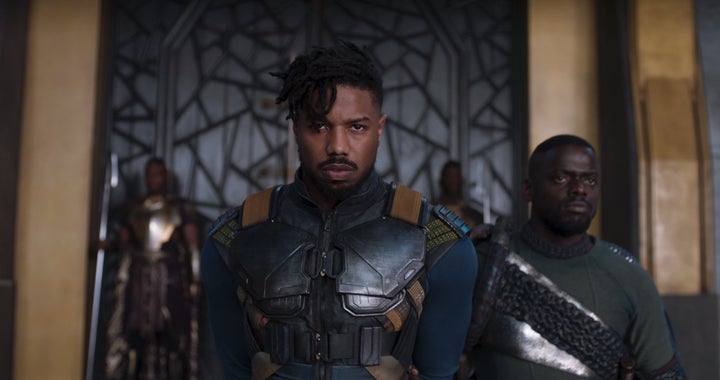
With a movie like this, where there’s obviously a history behind it, I imagine you feel an occasional urge to stick to what the original was because there are tons of people who came to know and love the original. Do you ever have any concerns about audience reaction to your artistic interpretation of these characters, or do you think that license is yours for the taking?
Well, I’ll put it this way: “Black Panther” was my fifth Marvel movie, so I’ve been in the Marvel game for a while. I always do like to look at what the comic looked like, but as far as what works in film and what works in the comic — it’s two different things. So we usually do take artistic license because we want to bring that character to life for film. Definitely, we make choices sometimes that are different from the cartoon, but we’re always looking for a better outcome — something the fans are going to love when it comes to life, because it’s one way in a comic but when you bring it to life, it’s a totally different character.
I think some people, too, appreciate artists who can develop their own interpretations of what these characters would look like.
Yeah. Especially in this movie, it really was a great opportunity. We were creating a whole new universe — a universe that has never been seen. We’re creating a whole universe that revolves around the continent of Africa. So to have the opportunity to design that and look at it, that was really important.
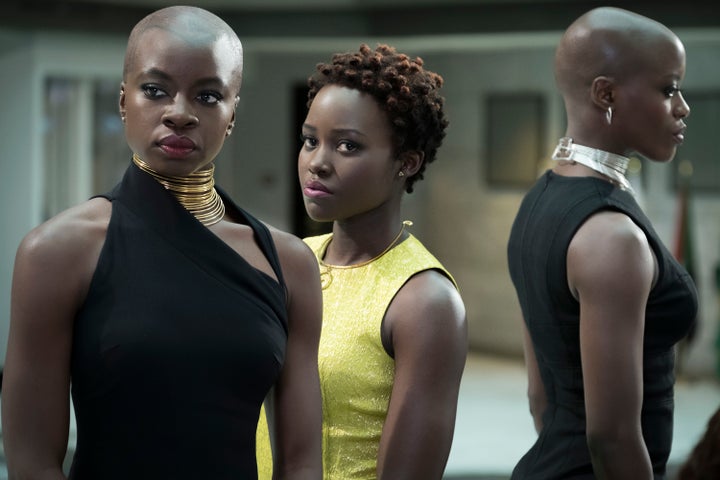
What were you going through emotionally as you were doing all the research for this movie? Styling is your job, but you may have also learned about aspects of your cultural roots that you hadn’t known about. What was that like for you?
Honestly, I’ve been really blessed. I’ve been to Africa myself. I’ve been to Ghana and I’ve been to Nigeria, so I’m lucky enough to have experienced that and to have felt like “Oh my God, this is really awesome, this is really home.” I’ve had that personal experience. So putting everything together wasn’t hard.
Fundamentally, I knew that we wanted to go in and create iconic characters for the screen. I want to create something that’s going to last forever, so when you look at “Black Panther” five years from now, you’ll still feel the same emotion. When you watch your favorite movie, it doesn’t matter how many times you’ve watched it ― you still get that feeling that you love this movie. So in establishing and making these characters, that’s really where I based it.
Did you experience any particular challenges in styling this movie that you didn’t experience with your previous Marvel films?
I’ll tell you what my hardest challenge is, and it’s not doing hair. Doing hair, for me, is my passion. It’s what I love. I’m a third-generation hairstylist. I eat, drink, sleep and think about hair at all times. So for me, that’s not the challenging part.
The challenging part, honestly, is managing people. Some days, we had 25 to 30 hairstylists. So managing people is probably the hardest part of my job. (laughs) Doing the hair and being creative is the most simple part.
When you say managing that many people is difficult, what do you mean?
Well, when you have 25 to 30 people, you have 25 to 30 different personalities, you have 25 to 30 people doing different things, and sometimes I call it herding cats. You’re trying to get people to do the same thing and be on the same accord, and sometimes, that’s the most difficult part about my job.
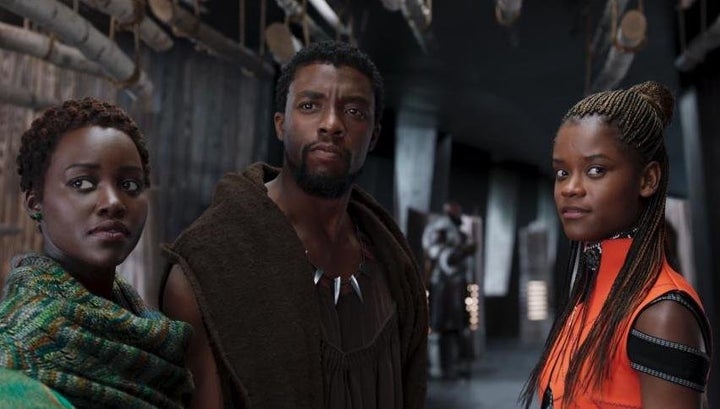
This is an ultra-black movie. I’m wondering if you felt any added pressures given that fact ― and, of course, considering the important role hair plays in the black community.
Honestly, not at all. I didn’t feel that pressure. Just know: Any movie I do, I give 175 percent. So for me, in designing a movie, it doesn’t matter. I didn’t feel any pressure. I just knew I wanted to do a good job. For me, when I go to work, I just want to do an excellent job — not a good job, an excellent job. I want to give it 175 percent, and I do it all in honor to God. So that’s how I look at designing any kind of project.
But I want to break down a little more about the design process, because I think it helps to know.
OK.
So the first part of designing “Black Panther” is looking at the traditional Africa. Looking at what the hairstyles were, what the texture was — that was the first part for me.
The second part is more modern, so really embracing what the natural hair movement is now. And also, Afro punk is really what influenced me ― I love Afro punk. And what I love about it is that people are creating different hairstyles within a natural environment. They’re using color, they’re using texture, and everybody is speaking their own language, and I love that.
And then the third part was basically the modern part, because Wakanda is a technologically advanced society. So really we were doing things that were futuristic and that, honestly, you hadn’t seen in a movie before. I watch a lot of movies, so my research included films like “A Clockwork Orange.” I watched “2001: A Space Odyssey.” I watched the original movie “Blade Runner” — things that were set in the future that you can still watch today and get the sense that they’re futuristic.
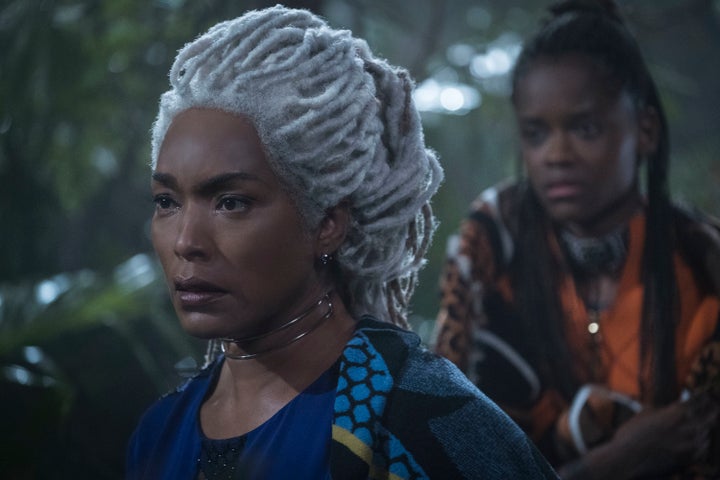
I’ve spoken with a number of black women who saw the film and really appreciated the fact that they saw themselves represented in this huge blockbuster film through some of the looks you created. What has the response toward you been like since the film debuted?
Oh, my God! My Instagram and Facebook and Twitter have blown up since last weekend! It’s such an exciting time. People are asking me questions — other hairdressers and makeup artists. Honestly, this is the most wonderful thing: I have talked to people who I haven’t seen or talked to in 20 years, who have called me, texted me, emailed me.
Collectively, it’s great to be a part of a movie that people so adore. I have been in this business for over 20 years, so this is a great celebration of life and it’s a great celebration of my career. And to have a movie that is really being accepted and acknowledged — and being a black woman — that’s sort of like the cherry on top.
Are there any other projects you’re working on?
Well, this is my personal thing that I do: I have an educational company called Hair Scholars, and I teach classes about what we do in the business as far as hairstyling. We teach people about wigs and color and cutting and period work and everything we do on the set — even how to get into the business. That’s my passion, because I want people to come into this business, and a lot of times people don’t know how. So my mission is to train people properly to really know how to be in this business and know what to do, so collectively, we can be better as hairstylists.
If we teach you how to work in excellence, that’s what you’re bringing to a project and you’re going to evolve from there.
Check out this list of Camille Friend’s book and movie influences in creating the “Black Panther” hairstyles:
BOOKS
MOVIES
